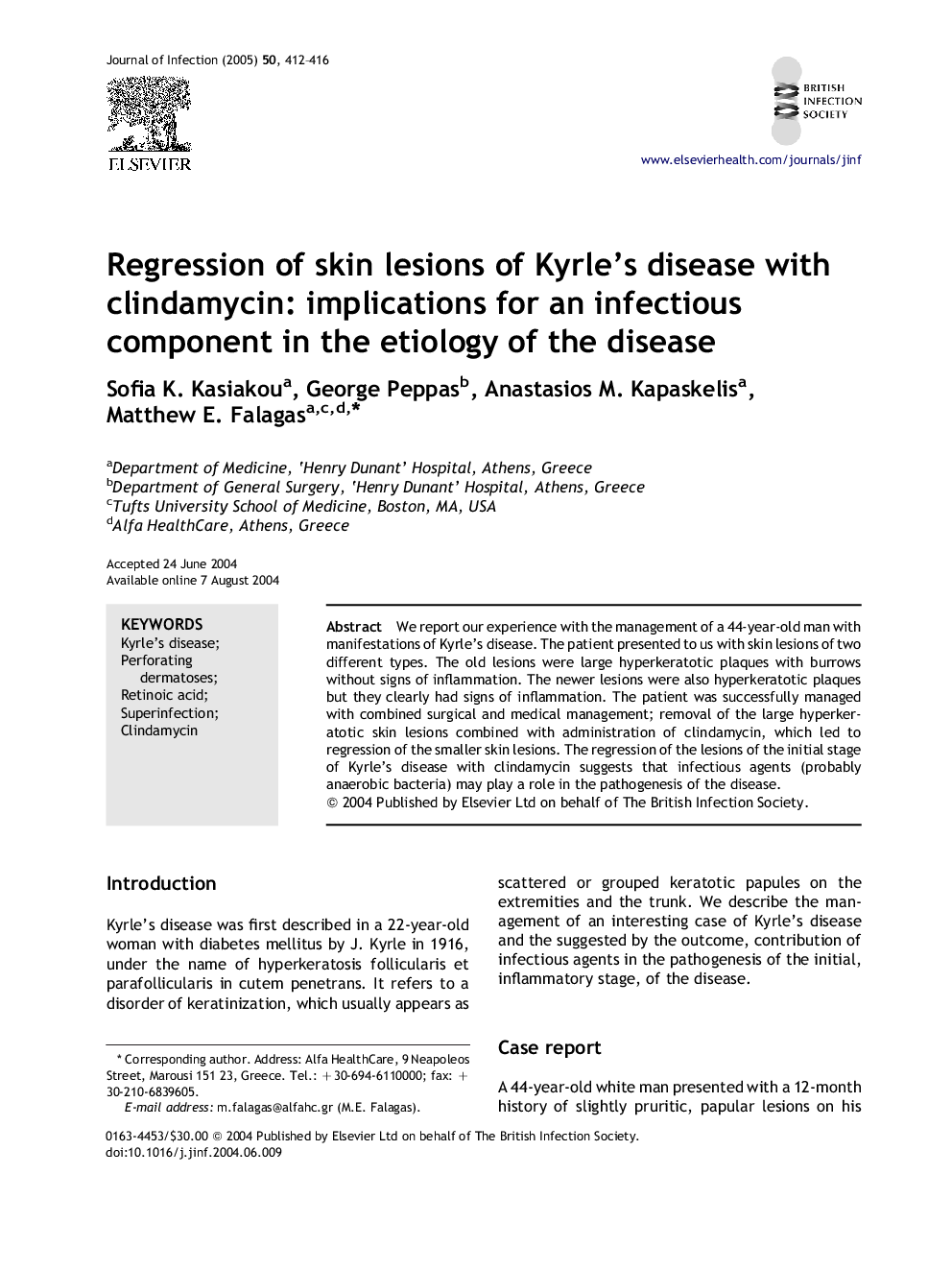| Article ID | Journal | Published Year | Pages | File Type |
|---|---|---|---|---|
| 9270743 | Journal of Infection | 2005 | 5 Pages |
Abstract
We report our experience with the management of a 44-year-old man with manifestations of Kyrle's disease. The patient presented to us with skin lesions of two different types. The old lesions were large hyperkeratotic plaques with burrows without signs of inflammation. The newer lesions were also hyperkeratotic plaques but they clearly had signs of inflammation. The patient was successfully managed with combined surgical and medical management; removal of the large hyperkeratotic skin lesions combined with administration of clindamycin, which led to regression of the smaller skin lesions. The regression of the lesions of the initial stage of Kyrle's disease with clindamycin suggests that infectious agents (probably anaerobic bacteria) may play a role in the pathogenesis of the disease.
Related Topics
Life Sciences
Immunology and Microbiology
Applied Microbiology and Biotechnology
Authors
Sofia K. Kasiakou, George Peppas, Anastasios M. Kapaskelis, Matthew E. Falagas,
